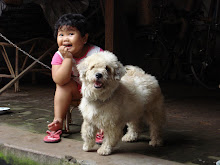In multilingual communities, more than one language is used. It means that people living
in this situation may speak more than one language. Thus, they can have linguistic repertoire. When interacting with others, they can choose a code or a variety which is appropriate with participants, topic and location. These factors are known as domains of language use.
These complexities of language choice form unique sociolinguistic situations. A speech community use two varieties (H variety and L variety) to cover all communities domains. This is called diglossia. Whereas poliglossia is described as situations where more than two distinct codes or varieties are used for distinguishable situations. Language choice is also determined by social distance, status, formality and function. The process of switching back and forth between one language or dialect and another within the same conversation is called code switching. It is a conversational strategy used to establish, cross, or break group boundaries; to create, evoke, or change interpersonal reaction. Situational code switching happens because of the situation changes while metaphorical code switching happens because of the topic changes.
The writer clearly explains the complexities of sociolinguistic situations in multilingual communities. It is true that people are often unaware when switching back and forth between one language and another. However, when their attention is drawn to this behavior, people react differently (p. 46). According to me, the writer should provide more evidences for people’s disapproval and approval of mixing the language.
This chapter expands my knowledge on the reasons of code switching. Before reading this article, I assumed that people code switch due to their linguistic incompetence. In fact, factors to do code switching in a diaglossic or polyglossic community are various.
Saturday, May 23, 2009
Language Choice in Multilingual Communities
Posted by TEFL TERE at 6:46 AM
Subscribe to:
Post Comments (Atom)

No comments:
Post a Comment